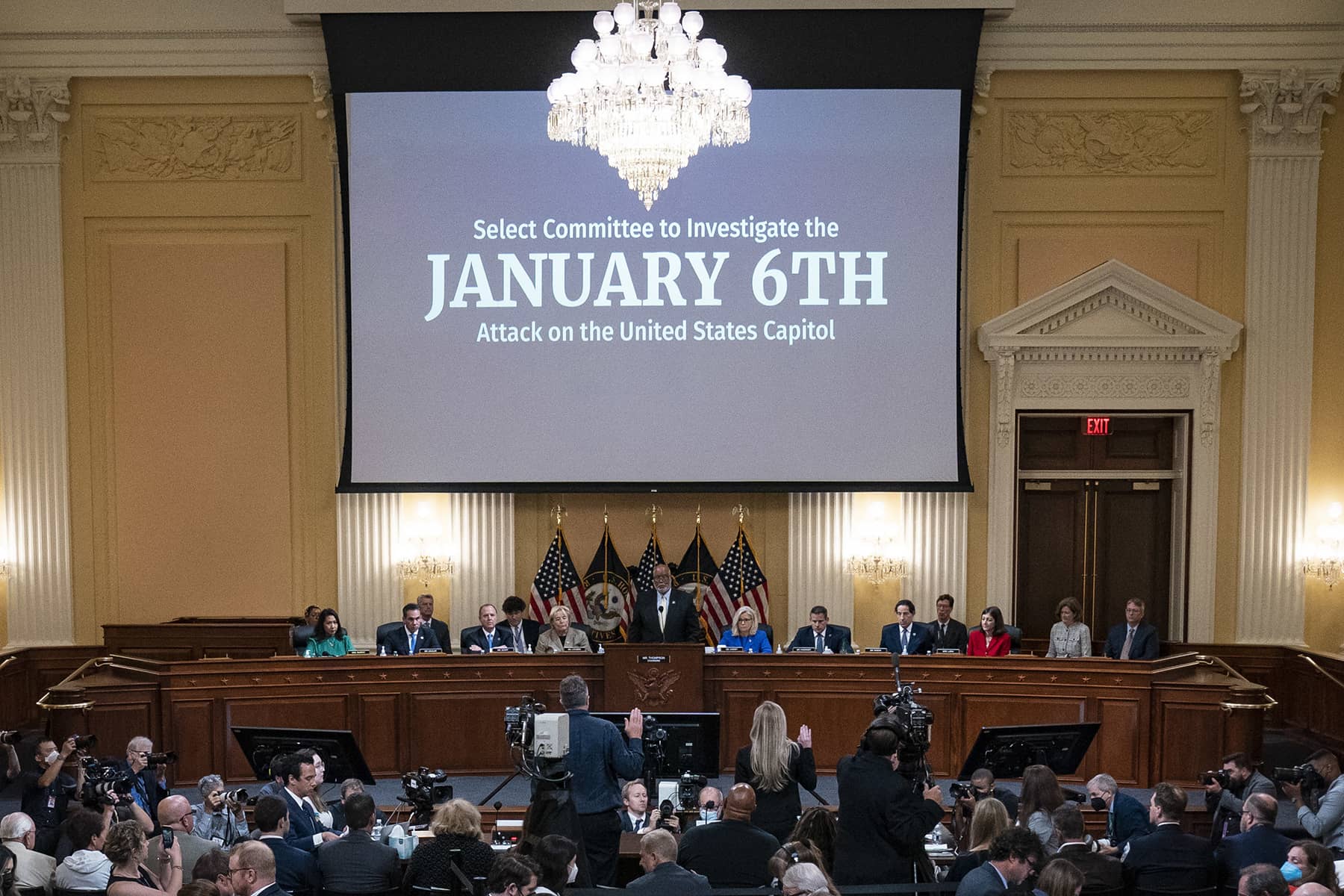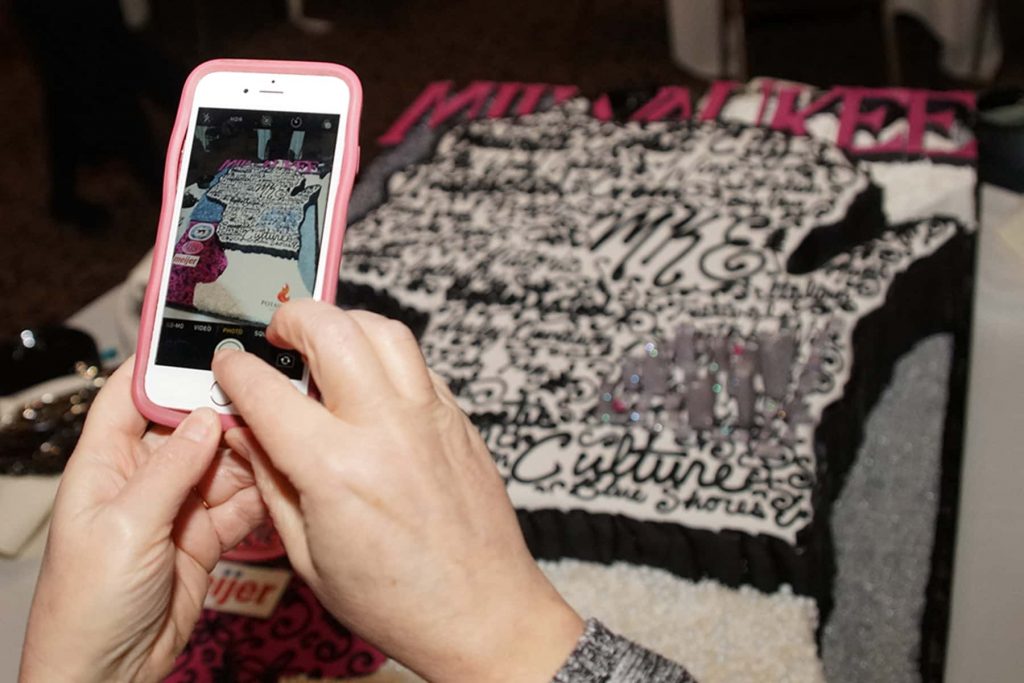
October 14 began with news that New York attorney general Letitia James was seeking a preliminary injunction to stop former president Trump from continuing with the fraudulent practices she filed a $250 million lawsuit in September to end. Apparently, the day James filed the lawsuit, the Trump Organization registered the “Trump Organization II,” which James claims is acting in some of the same ways the old organization does.
Investigators warned that Trump might shift his assets from the old entity to the new one to avoid liability. Trump lawyer Alina Habba said in a statement: “We have repeatedly provided assurance, in writing, that the Trump Organization has no intention of doing anything improper.”
Just an hour or so later, the House Select Committee to Investigate the January 6th Attack on the U.S. Capitol held what was widely perceived to be its ninth public hearing but, as chair Bennie Thompson (D-MS) made clear at the start, was in fact a meeting to conduct business.
Each member of the committee spoke, reiterating for those who have not been paying close attention the themes of the previous eight hearings. As Thompson pointed out, the committee has gathered an unusually large amount of evidence and has built its case almost entirely from the testimony of Republicans, not Democrats, undercutting the accusations of Trump loyalists that the committee has been partisan. Their evidence has come from Trump aides and Republican lawmakers, lawyers, political professionals, appointees, staff, and advisors and even from Trump’s family members.
The evidence the committee has presented to the American people establishes without doubt that Trump was the central cause of the events of January 6. As Representative Liz Cheney (R-WY), vice-chair of the committee, said: “None of this would have happened without him.”
The committee established that Trump knew that he had lost the election. His campaign advisors and his lawyers repeatedly told him that any suggestion that the election had been stolen was a lie. He even admitted that he had lost and, crucially, just days after he lost the election, abruptly ordered the withdrawal of all U.S. troops from Somalia and Afghanistan by January 15, clearly intending to set up his successor, Democrat Joe Biden, for a global crisis the minute he took office. Defense Department officials successfully stopped the order.
Even though he knew he had lost, Trump had no intention of actually leaving office. He and his team decided as early as July 2020 that he wouldn’t leave: he would simply declare that he had won the election, even if he lost. By October 31, 2020—before the election took place—Tom Fitton of the right-wing organization Judicial Watch drafted a memo for Trump to read on November 3, saying, “We had an election today — and I won.” On that same day, Trump ally Stephen Bannon told a private group that Trump was just going to “declare victory … , but that doesn’t mean he is the winner. He’s just going to say he is the winner.”
Everyone knew that in the early hours of November 3, it might look as if Trump was winning, but that would change as later votes came in because after Trump had spent months attacking mail-in voting, the mail-in votes that did come in would favor Democrats. Those votes would be counted after the votes cast in person on Election Day.
That “red mirage” was precisely what happened. But, as planned, as soon as the mail-in ballots began to be counted and numbers started to swing toward Biden, Trump went on television to announce that he had won and that the counting of votes should end.
Trump’s advisors all told the January 6th committee either that it was too early to declare victory when Trump did, or that there was no way he could win at that point. And yet, Trump told his supporters he had won and that the election was being stolen from him.
In the weeks that followed, the Trump campaign launched 62 lawsuits over the outcome and lost 61, winning only a technical victory that had no effect on the vote count. The committee established that when the Supreme Court refused to turn over the electoral counts of four states to state legislatures, rather than the states’ voters, Trump was livid. Cassidy Hutchinson, who was the top aide to Trump’s chief of staff Mark Meadows, testified that Trump was “raging.” He said: “I don’t want people to know that we lost. This is embarrassing….”
So Trump launched a pressure campaign against state officials to get them to assign their states’ electoral votes to him rather than to Biden. He pressured Georgia secretary of state Brad Raffensperger, telling him “I just want to find 11,780 votes” to put him over the top to take the state’s electoral votes. Trump pressured officials in other states. He also pressured Department of Justice officials: “Just say the election was corrupt and leave the rest to me and to the Republican congressmen.”
When that effort failed, Trump tried to replace acting attorney general Jeff Rosen with loyalist Jeff Clark, stopping only when the leadership of the Department of Justice threatened a mass resignation.
Thwarted, Trump turned to the idea of false electoral slates from the states, working with loyalists in the states to send to Washington a fake set of electoral votes in favor of him rather than the Biden electors voters had chosen. Even lawyer John Eastman, who pushed the plan, admitted it was illegal, violating the 1887 Electoral Count Act.
When that plan, too, failed, Trump fell back on his last resort: a violent attack on the U.S. Capitol as lawmakers were counting the electoral votes. Trump had primed a mob by repeating the lie that the election had been stolen, and the committee revealed that Jason Miller, senior advisor to the Trump campaign, forwarded a link from a pro-Trump website to Trump’s chief of staff Mark Meadows less than a week before January 6, saying, “I GOT THE BASE FIRED UP.”
The linked web page was about the upcoming session of Congress to count electoral votes, and it had comments like “Gallows don’t require electricity.” “If the filthy commie maggots try to push their fraud through, there will be hell to pay.” “Our lawmakers in Congress can leave one of two ways; one, in a body bag, two, after rightfully certifying Trump the winner.”
The committee released new information gleaned from Secret Service communications, showing that the service had extensive information that there was an attack on the Capitol planned for January 6 and that testimony suggesting otherwise was “not credible.” The committee said its investigation of the Secret Service is ongoing.
On January 6, members of the crowd at the Ellipse rally were armed, and Trump knew it. Nonetheless, he urged them to march on the Capitol. When his handlers refused to let him join them, he retreated to the private dining room in the White House and watched the violence unfold on television, ignoring pleas from congressional leaders, advisors, staff, and family to call off the rioters. Instead, at the very moment Vice President Mike Pence’s life was most in danger from the mob, Trump tweeted that Pence had let him down, energizing the rioters.
Meanwhile, other lawmakers stepped into the breach left by Trump’s refusal to act. The October 13 hearing had previously unseen footage captured by Alexandra Pelosi, House Speaker Nancy Pelosi’s (D-CA) daughter, of congressional leaders working the phones to get law enforcement officers to clear the Capitol.
The footage is chilling, as our elected leaders beg for help that is not coming. Pelosi took over the functions of the president, calm in the chaos as she worked to restore order and demonstrate that our government could still function.
Finally, proving that he could have called them off at any time, the rioters left when Trump told them to, after which he doubled down on the lie that he had been cheated of the presidency.
The recounting of Trump’s behavior established his assault on our democracy. The committee noted that although such an assault must not be allowed to stand unchallenged, its role is not to bring criminal charges—that is the role of the Justice Department—but to recommend changes to our laws to make sure such an assault never happens again.
And, Cheney made it crystal clear, Trump’s coup attempt failed in 2021 only because of those who stood against him, but there is no reason to believe that such people will always stand in the breach. Indeed, more than half the Republicans running for office in 2022 have signed on to Trump’s lies about the election. Urging all Americans to come together to hold Trump accountable, Cheney noted that if he is not held to account, we will lose our democracy, if not to him, then to some other wannabe dictator who sees our laws don’t matter. “Some principles must be beyond politics,” she said.
At the end of the committee’s presentation, it became clear why Thompson had specified that the October 13 meeting was not a hearing. The committee voted on a resolution, presented by Representative Cheney, to subpoena Trump for documents and testimony under oath. Cheney pointed out that more than 30 witnesses had invoked their Fifth Amendment right against self-incrimination, many in response to questions about their dealings with Trump, and said that “we are obligated to seek answers directly from the man who set this all in motion.”
The committee then voted unanimously in favor of the resolution. Tonight the Wall Street Journal editorial board wrote, “The Jan[uary] 6 committee probably won’t get Mr. Trump under oath, but the evidence of his bad behavior is now so convincing that political accountability hardly requires it.”
The bad news for Trump was not over. Just before the committee’s vote, in what New York Times Supreme Court correspondent Adam Liptak called “a stinging rebuke,” the U.S. Supreme Court refused to step into the case of Trump’s theft of classified documents to give him access to the classified documents taken from Mar-a-Lago by FBI agents on August 8. The decision was a single sentence.
Still, after all the day’s news, the final word belonged to Pelosi. On a video from January 6 released tonight, she is seen reacting to the news that Trump was intending to go to the Capitol, the seat of our elected government, where presidents traditionally must not go without an invitation. Told he might arrive, she responded to her chief of staff:
“I hope he comes, I’m gonna punch him out … I’ve been waiting for this. For trespassing on the Capitol grounds. I’m gonna punch him out, I’m gonna go to jail, and I’m gonna be happy.”
Pool / Select Committee to Investigate the January 6th Attack on the United States Capitol
Letters from an Аmerican is a daily email newsletter written by Heather Cox Richardson, about the history behind today’s politics














